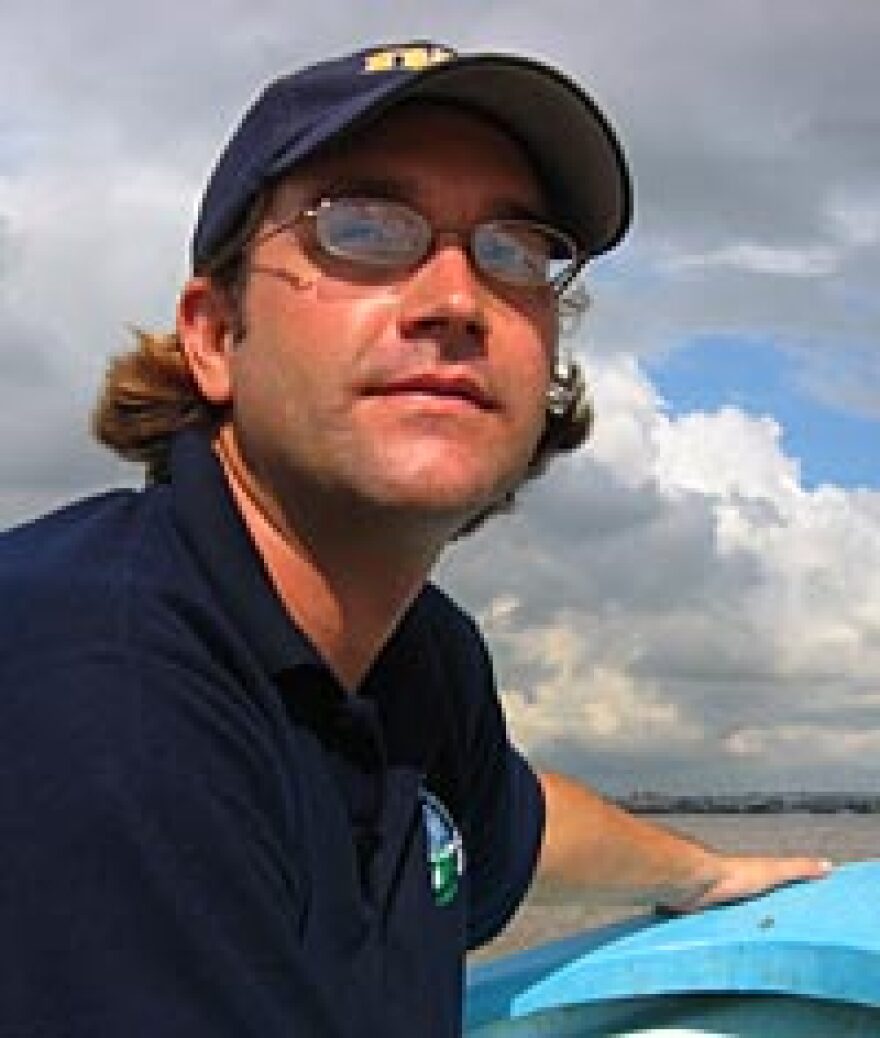


In part one of this two-part report, Michael Sullivan takes a journey up the Tonle Sap River. Part two focuses on the Mekong Delta's legendary -- and endangered -- Mekong giant catfish.
Cambodia is a poor Southeast Asian nation wedged between two powerful neighbors, Thailand and Vietnam. But Cambodia is also home to an incredible variety of flora and fauna and one of the world's richest fisheries. For the latest National Geographic Radio Expedition, Michael Sullivan visits a Cambodia few Westerners know about and even fewer actually see -- the wildly productive Tonle Sap river and lake.
Much of the nation's psyche is connected to water. Every year, revelers flock to the capital city of Phnom Penh -- where the Tonle Sap and Mekong rivers meet -- for the annual Water Festival.
The festival draws more than one million people to the city, and the rest of the nation all but shuts down. Rural Cambodians flood into the city, eager for a brief respite from the hardship of their daily routines. Journalist Kay Kimsong of the Cambodia Daily says the festival celebrates many things.
"Thanks to the water, and thanks to the moon," he says. "The water provides many things -- water gives us life."
Cambodians depend on fish for 70 percent of their protein. So intertwined are the Cambodians and their fish that the country's currency, the riel, is named after the small silver carp that is the staple of many diets here. Images of fish and fishermen are etched into the walls of stone buildings around Angkor Wat, the majestic temple complex that was once the center of an ancient empire nearly 1,000 years ago.
Indeed, the Mekong Delta is one of the most productive fisheries in the world, says Zeb Hogan, a biologist with the Mekong Wetlands Biodiversity Program. "Two million tons of fish are harvested from the Mekong every year -- more than the Amazon, more than the Congo, more than the Yangtze, more than the Mississippi," he says.
An unusual seasonal occurrence is one of the reasons the region is so productive: The monsoon rains pour so much water into the Mekong River that it briefly forces the Tonle Sap River to flow backwards, swelling the Tonle Sap Lake in western Cambodia to more than five times its normal size. Hogan believes the flooding provides an environment that brings more nutrients into the waters -- he calls it a "buffet" -- for the fish and birds that feed in the area.
"In terms of fish, this area is absolutely critical," Hogan says. "Without the Tonle Sap Lake, or the river driving this system, the fisheries would not be nearly as productive." But increasingly, the Tonle Sap Basin is under threat. Fishermen complain of declining yields. As a result, they are keeping smaller fish that they previously would have released -- fish that won't grow to spawn more fish. Also, large commercial fish traps make it even less likely that fish will make it out to the Mekong River.
Cambodia's fisheries chief, Srun Lim Song, says improved fishing techniques have had an impact on the catch -- especially the large fish. Deforestation, overpopulation and Chinese damming of the Mekong upstream may prove to be damaging in the long run, too. But he says the fishery is still relatively healthy.
Zeb Hogan is not so optimistic. In particular, he is worried about his latest project, and his passion: the endangered Mekong giant catfish, the largest freshwater fish in the world. Just how big? Last May, a fisherman caught one that weighed almost 648 pounds -- a record for a freshwater fish, anywhere.
At the height of the fishing season along the river, the nets should be full of fish -- but they're not. And Hogan and the fishermen are concerned. "This year we haven't had a single river catfish in these nets," Hogan says. "We've only caught one giant catfish. I hope there is some explanation, besides the fact that these fish are gone."
Catching and selling the endangered fish is technically illegal. But catching and selling them to the nation's Department of Fisheries -- or to Hogan -- had been allowed, in order to help with research.
But a few weeks ago, the department announced without explanation that that practice would end, and that fishermen would simply release the fish.
Hogan now fears what the new policy might mean for his research, which entails tagging and then releasing the giant catfish to study their migration patterns. "Things could get harder for me," he says. And he has his doubts about whether the species will survive much longer.
Zeb Hogan is a National Geographic Emerging Explorer. His field research has been funded by National Geographic's Conservation Trust, which supports innovative conservation activities around the world.
Copyright 2022 NPR. To see more, visit https://www.npr.org.


